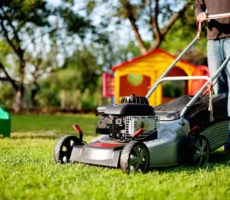Are you facing a problem with a pipe that needs fixing or replacement in your yard, patio, or concrete floor? Traditional repair methods often involve digging a trench, which can be messy and disruptive. Fortunately, there is a solution!
A trenchless sewer repair is a modern approach to fixing pipes without digging them up. This process involves two main techniques: pipe bursting and pipe lining. It’s faster and more efficient than traditional methods.
The work can often be completed in just one day and with minimal disruption to your daily routine. You can keep using your plumbing while the work is being done, with only a few hours of interruption.
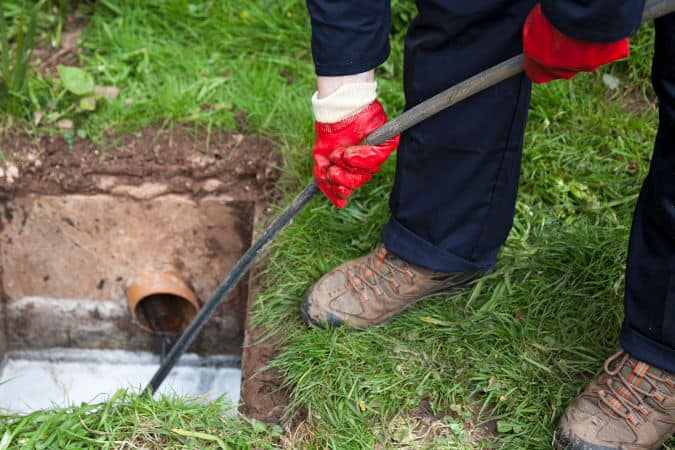
What Is Trenchless Sewer Repair?
Trenchless sewer repair is a modern solution to fixing drainpipes without needing traditional trench digging. This repair method uses advanced technologies, such as pipe bursting and pipelining, to effectively repair sewer lines.
As noted by the US Environmental Protection Agency, trenchless sewer repair is particularly valuable in urban areas due to its minimal disruption to businesses, homeowners, and traffic.
Cast iron pipes are prone to breaking, especially at the bottom, due to water flow and corrosion. Over time, the pipe may crack, become clogged with dirt, and eventually fail. In the past, fixing this required a trench to be dug in your yard or next to your building, creating a messy situation.
Trenchless sewer repair offers a cleaner and more efficient solution to these problems. The contractor only needs to dig one or two access points, sometimes using a manhole, to perform the repair. This makes trenchless sewer repair a more convenient option for fixing sewer lines and is considered the future of sewer line repair.
Benefits of Trenchless Sewer Repair
- No Excavation Required. The biggest advantage of trenchless sewer repair is that there’s no need for excavation, which means no need to dig a trench, reducing the mess and hassle associated with traditional repair methods.
- Fixed Price. Trenchless sewer repair often offers a fixed price for the job, giving you a clear understanding of the cost and eliminating the potential for unexpected expenses that might come with excavation-based methods.
- No Permitting and Inspections. Trenchless sewer repair typically does not require permitting or inspections, reducing the administrative burden and time required to complete the job.
- Cleaner and Faster. Trenchless sewer repair is a cleaner and faster way to repair your sewer pipes, as it does not involve digging a trench and can often be done in just one day.
- Environmentally Friendly. Trenchless sewer repair has a smaller environmental impact than excavation-based methods, as it reduces the amount of digging, excavation, and removal of soil and vegetation.
- Long-lasting Repairs. Trenchless sewer repair is known to produce repairs that last for up to 50 to 100 years, which means you won’t have to worry about your sewer pipes for a long time.
- Minimal Disruptions. Trenchless sewer repair typically causes minimal disruptions to daily activities, as it is a less invasive repair method than excavation.
Types of Trenchless Sewer Repair
The main types of trenchless sewer repair are:
- pipe bursting,
- pipe lining, and
- sliplining.
Some appeared just a few years ago, while others have existed since the late 1990s.
These technologies are used to fix your sewer line without destroying the yard or digging a trench.
Pipe Bursting
Pipe bursting is a trenchless sewer line replacement where a new pipe is pulled through the existing one, breaking the old one, and you get a completely new one. The old pipe is broken in place (burst) with a bursting cone, which pushes the surrounding soil so that the new pipe can fit in.
The United States Environmental Protection Agency website explains pipe bursting in finer detail.
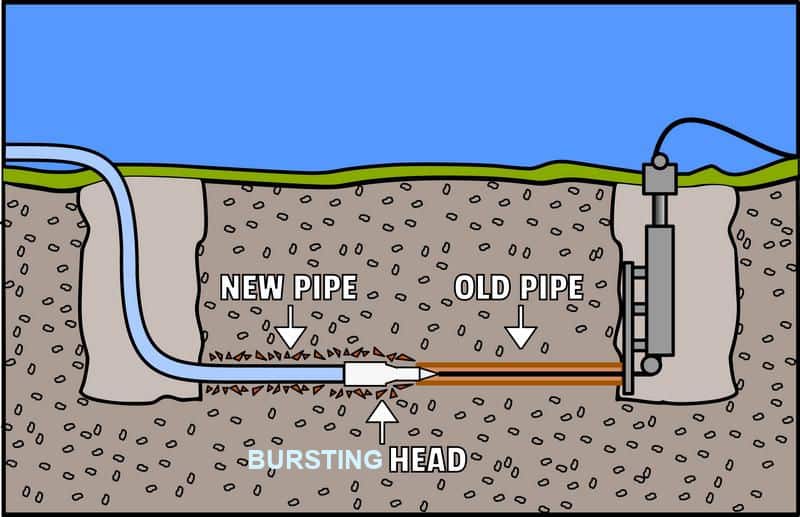
The old pipe is broken by fracturing or splitting. This will depend on the material of the old pipe.
For example, if the old pipe is made from:
- Clay,
- Concrete,
- Cast iron, or
- PVC,
the old pipe will be broken (fractured).
If, however, the old pipe is made from:
- Ductile iron,
- Steel, or
- HDPE,
the old pipe will be split.
Regardless of how the old pipe is broken, in the end it will be replaced with a completely new pipe, which lasts for 50 years at least. Pipe bursting has been proven worldwide as a viable option to replace failed underground pipes.
The process of pipe bursting goes like this:
- Digging two access points to access the pipe on two sides
- Running a cable line from one side of the pipe to the other, where the pulling machine is positioned
- Attaching a bursting cone to the new pipe, and pulling it with cable from one point of the ‘old’ pipe to the other
- The new pipe breaks (bursts) the old one, and now you have a new pipe in place.
Here’s a short video explaining pipe bursting:
Pipe Lining
Pipe lining is a form of trenchless plumbing where the cracks in the pipe are fixed by epoxy-resin mixture. This mixture is cast on the walls to fix the breaks, or it gets hardened on the inside to form a stronger pipe within the old one.
There are two types of technologies for trenchless pipe lining:
- Spin cast pipe lining
- Cured-in-place pipe lining
Spin cast pipe lining
Spin cast pipe lining technology exists since 1998, and it’s also called pipe coating. It is widely used as a trenchless sewer repair for pipes with many twists and turns. For spin casting, the repair crew generally only needs one access point, usually outside your property, to access the main pipe.
It’s highly cost-effective and frequently used, with a design life of 75 years.
The process of spin-cast pipe lining is simple:
- first, the pipe is cleaned of all dirt and residue
- next, an epoxy-resin mixture is pumped out of a tube into the pipe
- inside the pipe, a machine spins and casts the mixture onto the walls of the pipe
- it is then left to cure for several hours, after which the process is repeated
This mixture becomes very strong, stops all corrosion and it can protect your pipe for 50 years at least.
Cured-in-place pipe lining (CIPP)
Cured-in-place pipe lining (CIPP) is a very popular trenchless method of sewer construction that ultimately creates a completely new pipe inside the old one, which takes a relatively short time to complete.
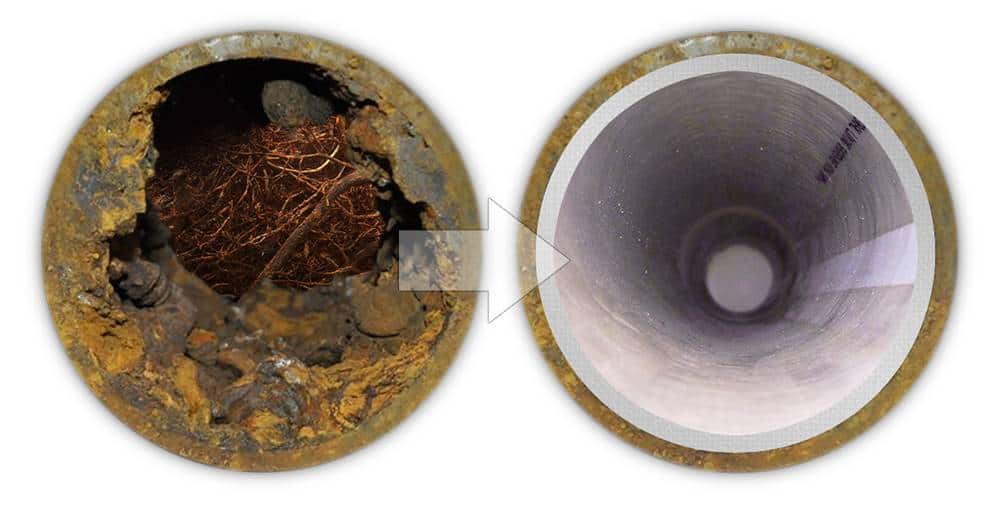
CIPP method creates a very strong pipe resistant to almost anything, even tree roots. The process uses several layers of materials that go into the pipe.
First, we have an outside fabric coated with a thermosetting resin. When they are mixed, it causes the material to react and heat up to about 180 degrees, turning it into a rock.
Another layer separates this fabric from the balloons that act as the middle layer. These balloons are pumped with air to get the outside fabric to stick to the pipe.
After about 4 hours, the balloons are removed and left behind your relined pipe. After this, the pipe is inspected with a camera for any potentially missed spots, cracks, and dimples. The pipe is now completely covered from the inside with this white rock-like material that fixed all the cracks and protects it for at least 50 years.
So even if your pipe cracks again, it has this artificial pipe inside it, that is way stronger and can even stop tree roots from damaging it.
The city of Portland website goes into more detail about the benefit of the CIPP method of trenchless sewer repair.
Here’s an excellent video on pipe lining by Hugo Forster:
Sliplining
Sliplining is a well-established trenchless method of putting another pipe if a smaller diameter inside your existing pipe.
The space between the existing pipe and the new pipe is typically grouted to prevent leaks and to provide structural integrity.
For sliplining, an insertion pit must be dug for each pipeline segment, and because of this, in most applications, sliplining is not a completely trenchless technique. However, even this amount of excavation is far less than what is needed for a traditional excavation method of sewer line repair.
Trenchless Sewer Repair Cost
On average, trenchless sewer repair cost from $80 to $200 per linear foot of lining for residential purposes and from $130 to $260 per linear foot for commercial purposes.
Trenchless sewer repair costs vary by pipe diameter, installation complexity, and length. Also, it’s generally less expensive to install outside of a building than under it because of the installation method involved.
Every trenchless pipe lining company will have a minimum charge to mobilize their expensive equipment and trained crew.
Trenchless Pipe Bursting Cost
Replacement of pipes by trenchless pipe bursting costs around $80 to 200 per linear foot. The entire job could cost anywhere from $4000 to $6000 for a smaller job and up to $12000+ for bigger repairs. The price will vary depending on pipe diameter, installation complexity, and length.
Trenchless Pipe Lining Cost
Trenchless pipe lining costs around $80 to $200 per linear foot. The entire job could cost you anywhere from $4000 to $12000 on average. Like pipe bursting, the price will vary depending on pipe diameter, installation complexity, and length.
Traditional vs Trenchless Sewer Repair Cost
Traditional excavations can often be cheaper than trenchless sewer repair, but the costs can easily jump if you have any kind of utilities or obstacles above the pipe.
A traditional dig pipe repair costs around $50 to $250 per foot, and the entire job will cost $3000 to $6000 on average on a small scale. However, traditional excavation costs can rise easily beyond 12k, up to 20k for any additional obstacle and difficulty the team encounters.
In comparison, there are usually less obstacles for trenchless sewer repair, and the price generally stays at a fixed rate per linear foot because the job is done through the old pipe. There is no excavation, no digging next to tree roots, and no additional damage other than the one or two access points the crew needs to make several feet wide. Sometimes even manhole access is enough.
Trenchless Sewer Repair Pros and Cons
Spin cast pipe lining pros
- cost-effective
- the design life of 75 years
- intersections and branches get lined completely
- can go through multiple bends without a problem
Spin cast pipe lining cons
- slightly thinner than cured-in-place pipe lining (usually not a problem)
Cured-in-place pipe lining pros
- significantly less time to complete than other sewer repair methods
- better protection than spin cast pipe lining
- can protect against tree roots and pipes on the outside of the house
Cured-in-place pipe lining cons
- doesn’t cover an intersection of pipes
- can’t cover too many twists and turns. If it gets stuck you’ll need to excavate through the floor or under the house to get it out
- if not positioned properly in the intersection of the pipes, the connection can be covered up and it can cause backups (must be fixed and polished up later on)
- requires two access points, sometimes through the house, and sometimes through the outside walls of your house
Here’s a cool video on Cured-in-Place-Pipe Lining (CIPP):
Trenchless Sewer Repair Equipment
For those getting into the business of trenchless sewer repair, check out some tips on reaching success with your business sooner. There are many equipment items necessary for most trenchless sewer repair jobs. Here is the most common trenchless sewer repair equipment:
- Pulling unit
- Power supply unit
- Hydraulic pumps for bursting
- bursting heads of several sizes
- Fusion units for pipe fusion
- cylinder head
- cylinder clamp
- assembly sheave
- burst heads of several sizes
- More accessories and parts:
- sheave assembly
- tapered jaw
- clamps
- blade sets
- cable grip tool
- lever bracket
- cylinder clamp seals
- and a few more.
The first few items of sewer repair equipment cost several thousand dollars, and the rest are much cheaper. As you can see, getting everything set up is a big investment, but it may be worth it, and the business has great potential in the future.
FAQs
Which two trenchless sewer operations are most common?
The two most common trenchless sewer repair operations are trenchless pipe lining and trenchless pipe bursting. These techniques use modern pipelining and pipe bursting technologies to repair pipes without excavation.
How long does it take to reline a drain?
The time it takes to reline a drain depends on the length and complexity of the repaired sewer line. On average, trenchless pipe relining can take anywhere from a few hours to a full day to complete.
What is the lifespan of sewer pipe liners?
Trenchless sewer pipe liners typically have a lifespan of 50 to 100 years. The lifespan can be affected by factors such as the type of liner, the environment, and the conditions of the pipes before relining.
What is the cost of sleeving a sewer line?
The cost of sleeving a sewer line varies based on factors such as the line length, pipe diameter, and installation complexity. On average, it can range from $80 to $200 per linear foot for residential purposes and from $130 to $260 per linear foot for commercial purposes.
What is the most typical trenchless repair material?
The most common trenchless repair material is a resin-impregnated felt tube, also known as a cured-in-place pipe (CIPP). The resin hardens to form a durable, new inner pipe within the damaged pipe, providing a long-lasting repair solution.
Can trenchless sewer repair fix a belly?
Trenchless sewer repair can fix belly issues in a sewer line, such as a sagging pipe that is still intact and not punctured, by relining the pipe with a new seamless liner. However, if a significant break or collapse causes the belly, trenchless repair may not be the most suitable solution, and excavation may be necessary.


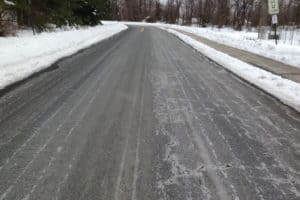
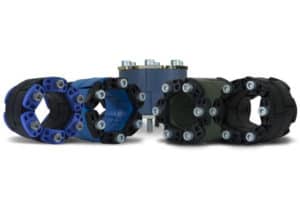
![How Much Do Shipping Containers Cost? [Full Guide] Shipping Container retail shop (cost)](https://howmonk.com/wp-content/uploads/2020/03/Shipping-Container-retail-shop-300x200.jpg)
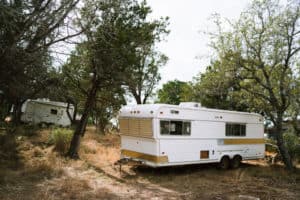
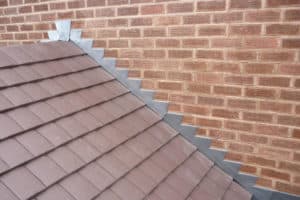


![How Much Do Shipping Containers Cost? [Full Guide]](https://howmonk.com/wp-content/uploads/2020/03/Shipping-Container-retail-shop-230x200.jpg)
